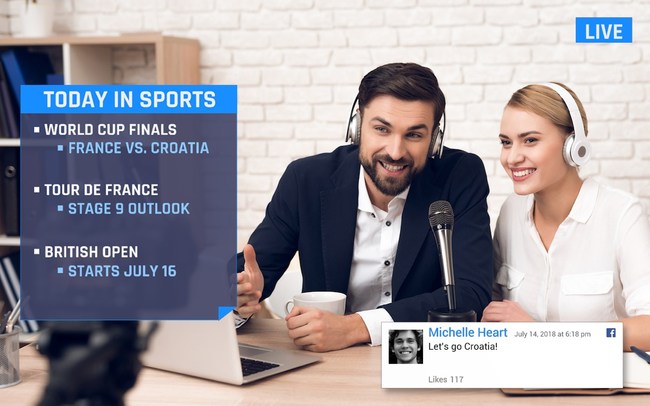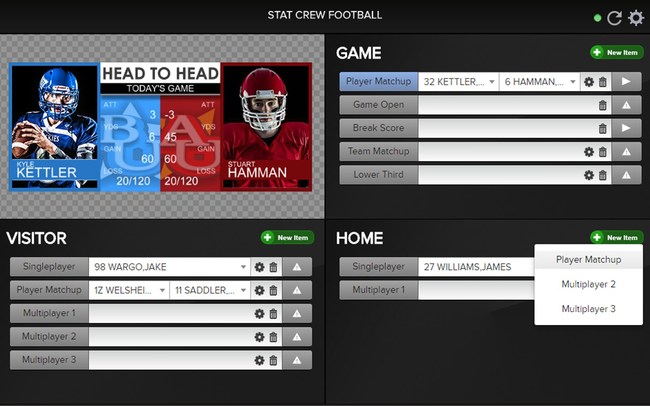NewBlue, Inc. today released a new version of its on-air graphics solution, Titler Live 4, offering professional broadcast quality graphics and streamlined live production workflows at a fraction of the cost of competing systems. Titler Live 4 offers many user experience enhancements as well as numerous powerful new features.
This is the latest generation of NewBlue's Titler Live product suite, which has a rapidly growing international customer base of live streamers and broadcast professionals. This release includes purpose-driven workflows designed to help save users time and provide intuitive, streamlined processes while still offering the power and flexibility that Titler Live users value. New features include Microsoft® Excel®spreadsheet connectivity, additional variable/data input and editing tools, and enhanced social media management. Sports broadcasters will benefit from additional Stat Crew®statistics integration and new graphics packages per sport.
"Historically in our industry, users have had two alternatives for on-air graphics: unbelievably expensive, complex systems or very primitive low-cost solutions," said Todor Fay, CEO of NewBlue. "With today's technology, there's no reason why everyone – from major networks to YouTubers – can't have a system that's as powerful as their imagination while offering the ease of use and affordability that we expect of modern day software. That has been the driving vision behind NewBlue's products. With Titler Live 4, we're continuing to build on that foundation and provide our customers with even better workflows and expanded features."
Titler Live 4 is available in multiple versions that are tailored to meet the needs of social streamers, sports broadcasters, and professional media organizations. The flagship product, Titler Live Broadcast, works with leading streaming solutions to deliver unlimited layers of graphics for any live broadcast on up to 16 channels of NDI® or SDI key/fill. Graphics may be created natively, or users can leverage existing 3D animated graphics imported from any design source, including Adobe® Photoshop® and After Effects®.
About NewBlue, Inc.
NewBlue is a leading provider of video editing, post-production, live streaming and broadcast solutions worldwide. Since 2006, NewBlue has empowered video pros and enthusiasts alike take their productions to new heights with creative video titling, effects plugins and on-air graphics tools. We share our customer's passion for visual storytelling and partner with industry leaders such as Adobe, AVID, Grass Valley, Telestream, EVS and more to provide seamless end-to-end experiences. Learn more at www.newbluefx.com.













